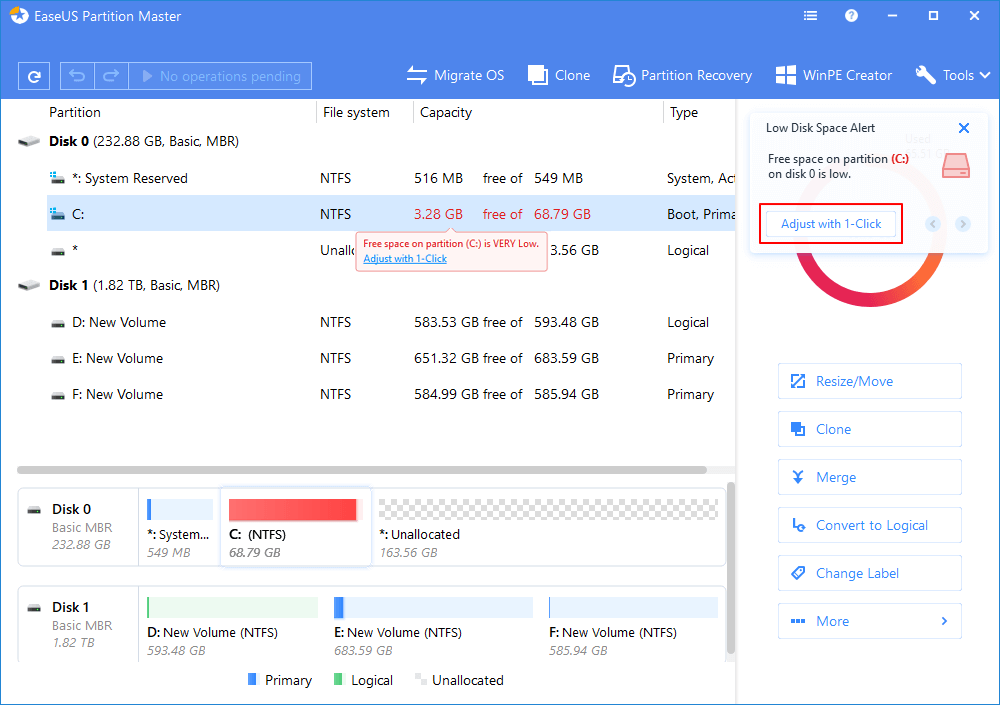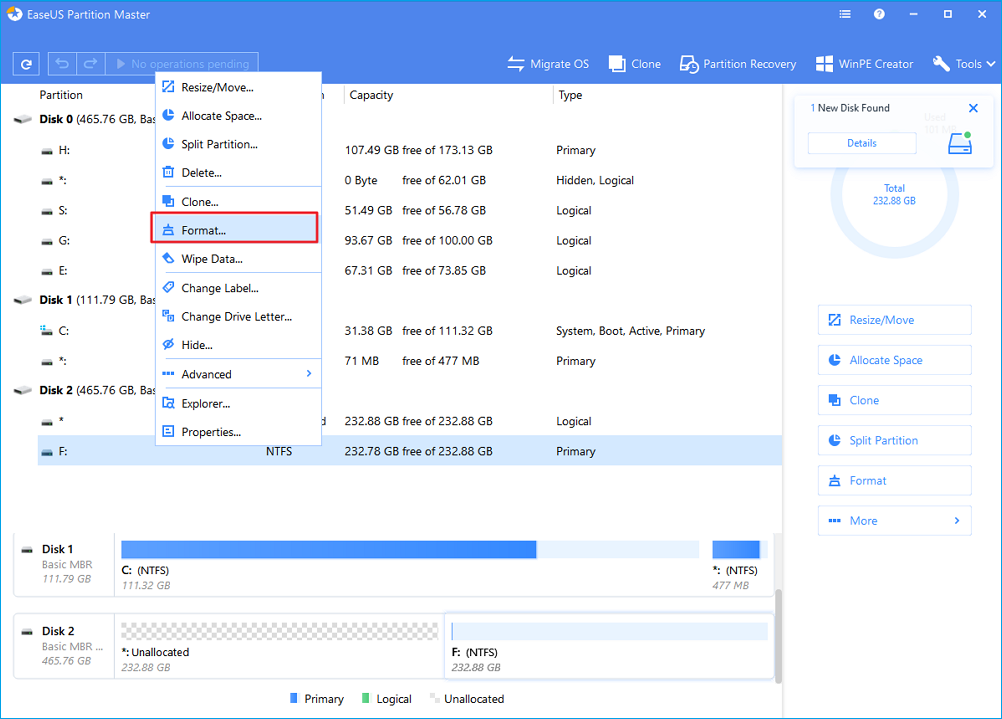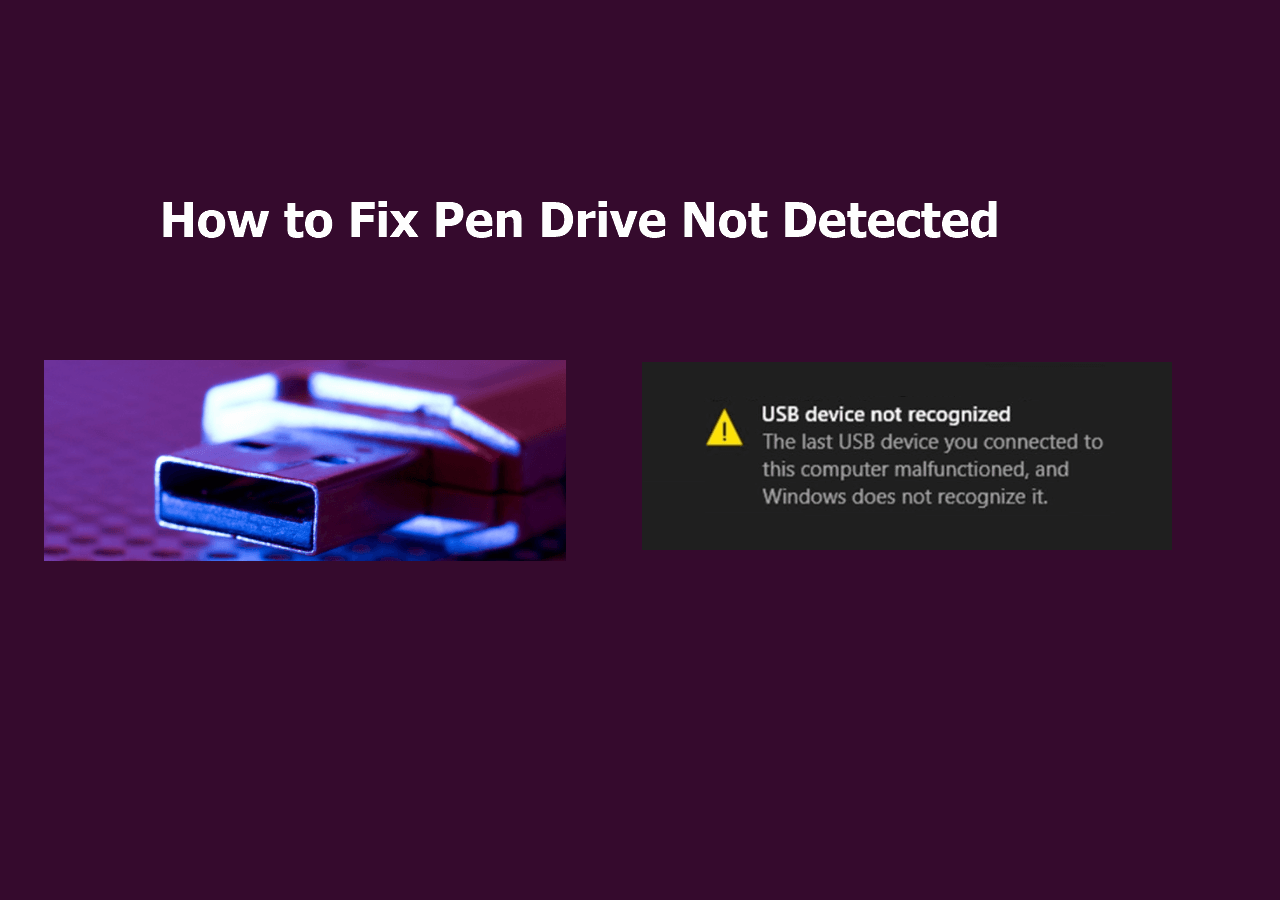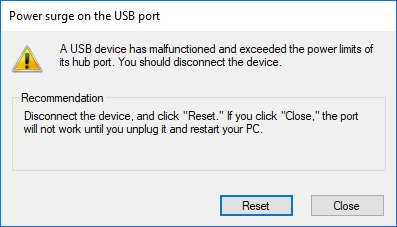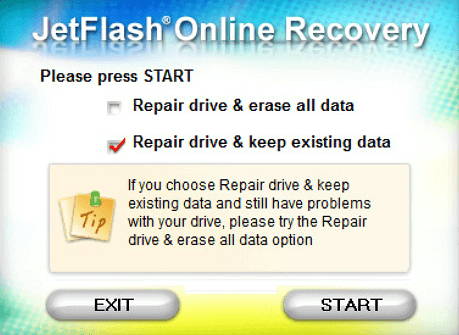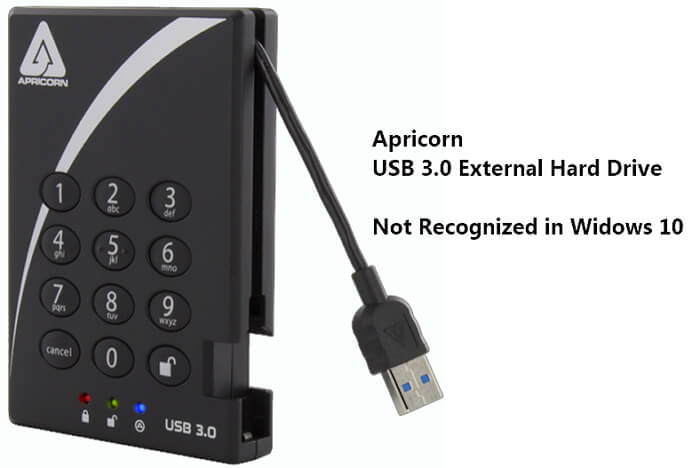-
![]() Free Download the USB Data Recovery Software Full Version | 2025 Best Choice
Free Download the USB Data Recovery Software Full Version | 2025 Best Choice December 12,2025
December 12,2025 6 min read
6 min read -
![]()
-
![]()
-
![]()
-
![]()
-
![]()
-
![]()
-
![]() RAW USB Recovery | How to Recover Data from RAW USB Drive
RAW USB Recovery | How to Recover Data from RAW USB Drive December 12,2025
December 12,2025 6 min read
6 min read -
![]()
-
![]()
Page Table of Contents
In this article, you'll learn:
- Rescue Data on the USB Flash Drive with Recovery Software
- Fix USB Not Showing Up in Windows
- Fix Hard Drive Not Showing in File Explorer/Disk Management
USB Flash Drive Not Showing Up
"Hello, I can reach the USB from the device manager and format it. I have tried updating drivers and troubleshooting devices and hardware and nothing came up. I formatted the drive to FAT32, but it still doesn't appear in the Explorer file. I have 10 of the same brand/size USB drives, and I may have accidentally put a boot drive in my system while it was running (thinking it was a different USB). Other USB will read in my file explorer, just not these 64GB thumb drives." - from Reddit.com
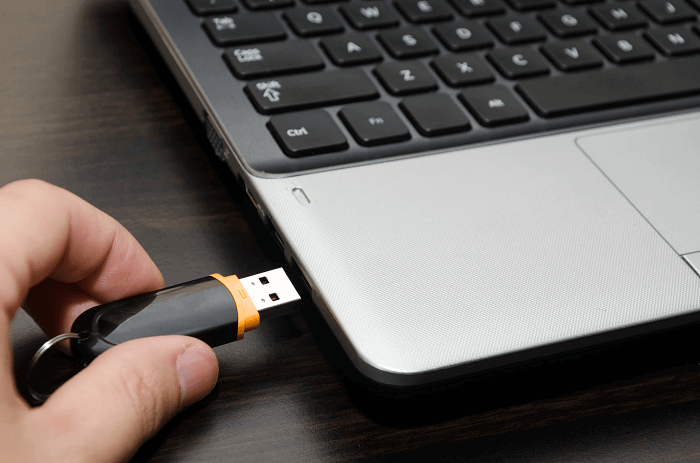
⚡Preliminary Checks on Your USB Drive
Many users have encountered this problem - USB not showing up. Generally, the pendrive not showing up means the drive is disappearing from File Explorer. It might be that the drive is visible in the Disk Management tool.
To verify this, go to This PC > Manage > Disk Management and check whether your USB drive shows up there. Depending on whether it shows up or not, use the appropriate section below to fix your issue.
Here, we offer multiple solutions as there are two possible scenarios where your PC does not detect the USB. These methods should help you fix your issue without making you lose any data. If you have this issue on a Mac, check out our flash drive not showing up on the Mac guide to resolve your issue.
Rescue Data on the USB Flash Drive with Recovery Software
It is important to rescue data from the USB flash drive because when the drive is not accessible or not recognized, your USB may have some physical issues or need to format. With professional data recovery software - EaseUS Data Recovery Wizard, you can easily retrieve lost data from your USB device.
You don't need to be an experienced data recovery expert, and you can easily perform USB drive data recovery automatically with this reliable recovery program. No matter you use a Windows computer or a macOS laptop, EaseUS USB data recovery software can suit your needs!
Now, please insert the USB drive again and launch the EaseUS recovery tool on your computer. Then, follow the tutorial below to recover data with this USB recovery tool:
Step 1. On the interface of this program, choose "SD Card Recovery" and find your external USB drive to scan.
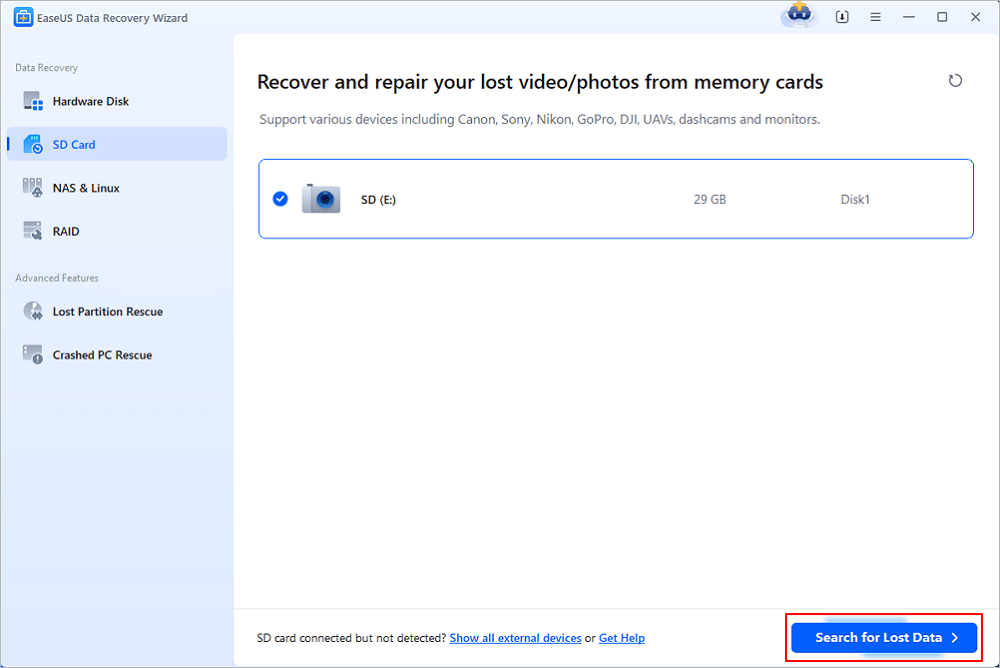
Step 2. This tool can recover deleted files on your USB drive, including photos, documents, videos, and unsaved files. Select a type and find the files you want to restore.
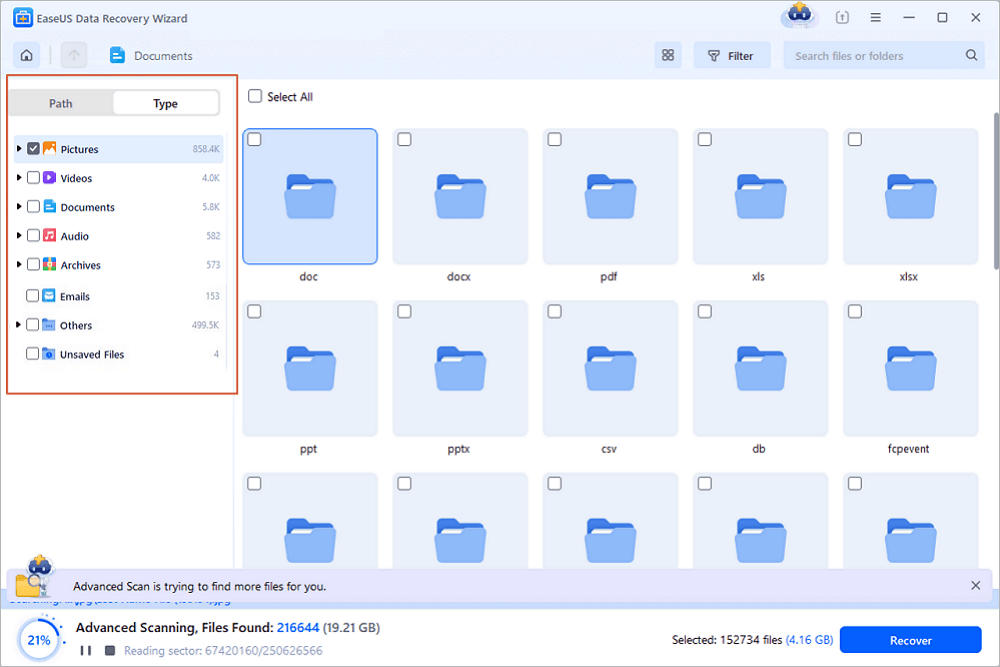
Step 3. You can click "Preview" to check the files. After previewing, click "Recover" to save these files to a new location.
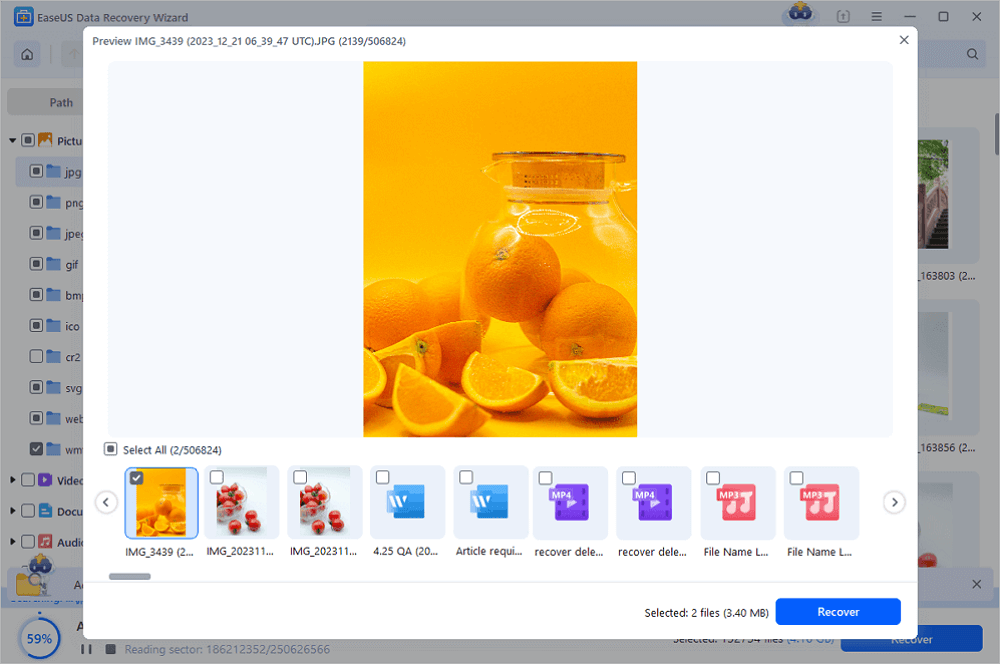
We hope this software has already restored important files from the USB drive for you, and you can recommend this tool to more users!
Fix USB Not Showing Up in Windows
If your USB drive shows up in Disk Management, it means Windows can still detect your drive. But, the USB not showing up in Windows 10 File Explorer frequently happens for some reason. Some possible reasons are USB driver issues, drive letter conflicts, and the volume not containing a recognized file system.
The solutions vary based on the causes, but all the solutions are detailed below. Follow these solutions, and your issue should be gone.
- Method 1. Seek USB Flash Drive Repair Services (Recommended)
- Method 2. Update USB Drive Driver
- Method 3. Reinstall Disk Drivers
- Method 4. Create New Partitions
- Method 5. Assign a New Drive Letter to the USB
- Method 6. Fix File System Errors
- Method 7. Update Windows Operating System
- Method 8. Restore Windows Operating System
You can check this video tutorial to see the methods of fixing USB not showing up on Windows PCs.
- 00:00 - USB Drive Not Showing Up
- 00:41 - Update USB Driver
- 01:22 - Reinstall USB Driver
- 01:56 - Create New Partitions
- 02:41 - Assign New Drive Letter
- 03:43 - Fix File System Errors
- 05:17 - Drive Not Showing in Disk Management

Method 1. Seek USB Flash Drive Repair Services (Recommended)
The computer cannot read or recognize the USB flash drive. The most reliable way to fix this error is to ask experts for help. We provide you with effective EaseUS data recovery services. You can repair your flash drive errors with simple clicks. Contact the experts and get help as soon as possible.
Consult with EaseUS' data recovery experts for one-on-one manual recovery service. We could offer the following services after a FREE diagnosis
- Repair USB drive, HDD, SSD, external hard drive, and pen drive.
- Fix disks that cannot be read or accessed because of bad sectors.
- Fix disks that become GPT-protected partitions.
- Repair damaged RAW drive that needs to be reformatted (BitLocker encrypted drive is also supported).
- Wipe data, unformat hard drive, install/uninstall software or driver, etc.
Method 2. Update USB Drive Driver
This method works when your USB drive does not show up in File Explorer but shows up as unallocated space in Disk Management. Follow the detailed steps below to make your USB drive usable again by updating USB drivers in Windows 11/10.
Step 1. Connect the USB flash drive to your PC, right-click on This PC, and choose Properties.
Step 2. Select Device Manager and expand Disk drives. Find and right-click the problematic pen drive and select Update driver.
Step 3. Click Automatically search for driver software online on the following screen.
Step 4. Wait for the driver to be updated. Then, reboot your computer. Afterward, you can try to reconnect your USB drive to your PC and check whether the USB drive shows up or not.
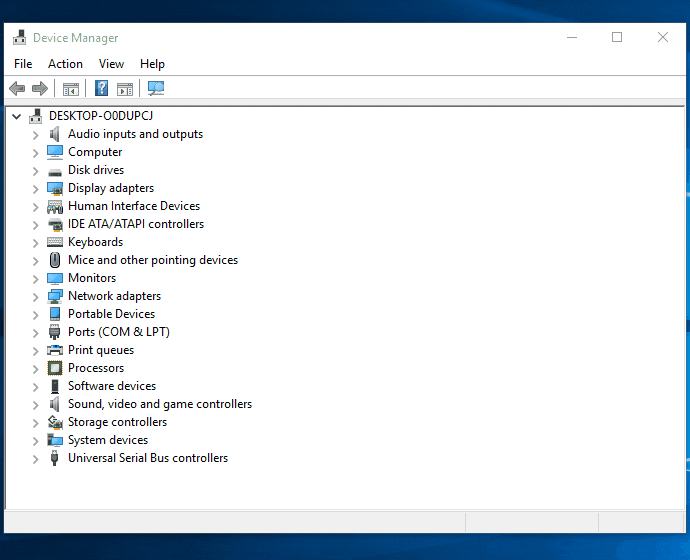
Method 3. Reinstall Disk Drivers
This method can also help solve disk-related issues like "The system cannot find the file specified."
Step 1. Right-click This PC and choose Properties > Device Manager.
Step 2. Click on Disk drives, right-click on your USB drive that is not showing up in File Explorer, and choose Uninstall device.
Step 3. In the prompt asking you to confirm the removal, click OK. (Wait patiently and let the process finish. If it takes too long, you can remove the USB flash drive from the PC.)
Step 4. Restart your computer and reconnect the USB flash drive/external hard drive to the PC. After the computer restarts, the driver will be automatically installed.
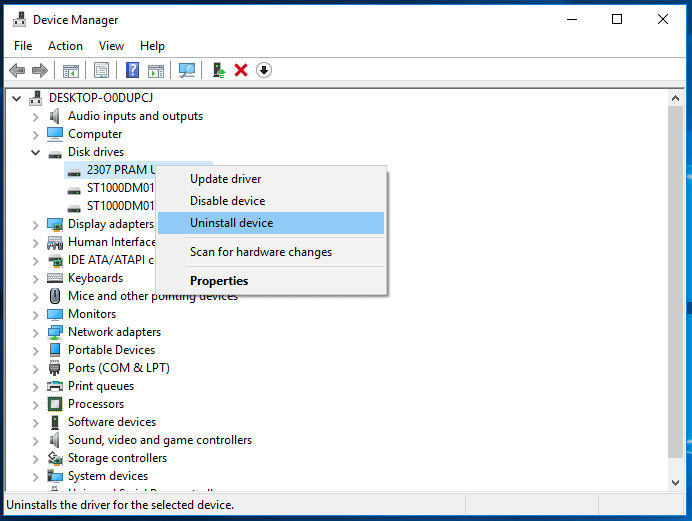
Method 4. Create New Partitions
If your USB shows up as unallocated space in Disk Management after updating or reinstalling the driver, you are recommended to create a new partition to make it ready for data storage.
To create new partitions on the USB drive:
Step 1. Right-click This PC and choose Manage > Disk Management.
Step 2. Right-click the unallocated space and choose New Simple Volume.
Step 3. Follow the wizard to finish the remaining process.
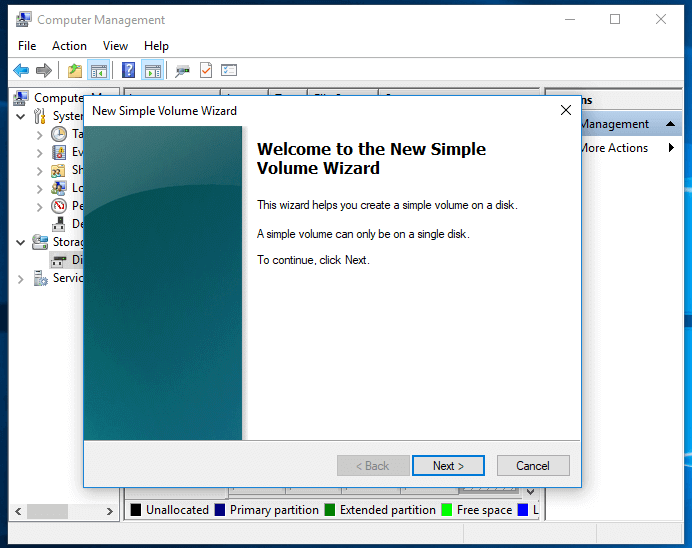
Your USB drive should now show up in Windows as usual. You can copy the files you recovered to your USB if you want. Don't forget to share this page on social media!
Method 5. Assign a New Drive Letter to the USB
If the drive letter of your USB drive is the same as one of the drive letters of your computer's hard disk partition, you won't be able to see it in Windows File Explorer. In this case, you need to assign a new drive letter to your USB drive.
Step 1. Right-click This PC and choose Manage > Disk Management.
Step 2. Right-click the volume on your USB flash drive and select Change Drive Letter and Paths.
Step 3. In the window that opens, click Change.
Step 4. Assign a new drive letter to your USB drive and click OK.

Method 6. Fix File System Errors
If your USB flash drive has file system errors, it will show up as RAW and become inaccessible. Here, the file system error refers to an unsupported or damaged file system caused by misoperations or improper formatting. To fix the file system error, you must format the drive to convert RAW to NTFS.
After storing your data in a safe place, you need to format the USB drive to convert the file system back to NTFS or other Windows-compatible file systems.
Step 1. Open the Start menu, search for Computer Management, and click Computer Management in the search results.
Step 2. Click Disk Management in the bar on the left-hand side, then find the device in the drive viewer.
Step 3. Right-click on your USB flash drive and select Format to format the drive and make it usable.
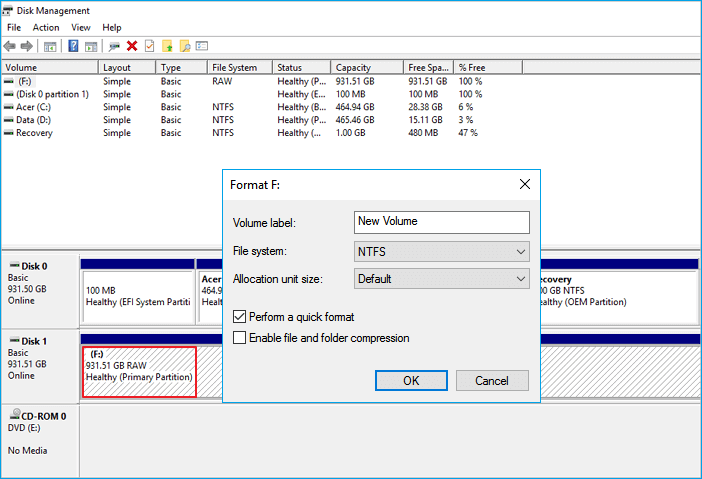
Method 7. Update Windows Operating System
Outdated operating systems may cause external devices like USB drives not to be recognized in Windows. You may follow the tutorial below to update Windows:
Step 1. Find the Windows 11 search box and type in Check for updates. After pressing the Enter key, the update window will open automatically.

Step 2. The available updates will show up, and you can click "Install Now" to upgrade to the latest version.

Method 8. Restore Windows Operating System
Restoring the computer to an earlier date should also help you solve the USB drive not detected issue. You can easily restore your Windows with the System Restore option.
Step 1. Open the Control Panel window and click "Recovery".

Step 2. Click the "Configure System Restore" option.
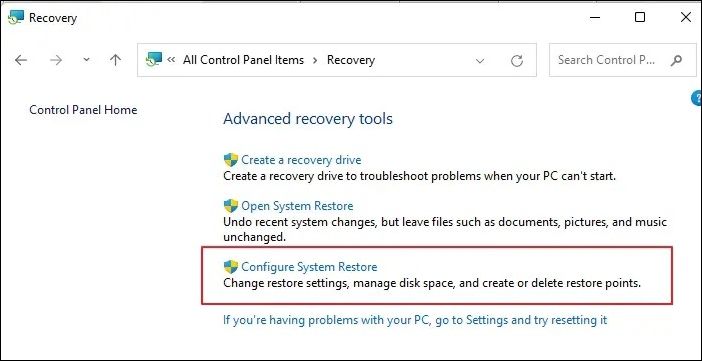
Step 3. Click "System Restore" and follow the instructions.
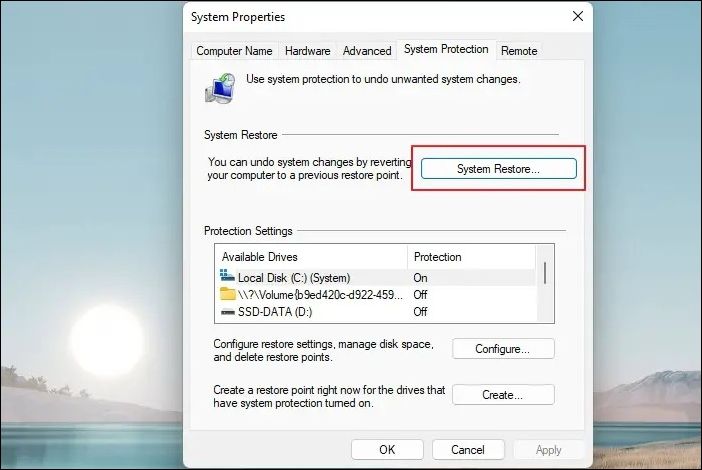
Anyway, System Restore Windows 11 is the last method for Windows to fix USB flash drives showing issues. You can share all the methods now!
You can also check a more detailed passage to fix this issue on Mac:
Solved: USB Flash Drive Not Showing Up Mac
Does your Mac not recognize a USB drive? Is the USB flash drive not showing up on Mac after inserting it in the USB port? Read more >>
Check out the fixes below if you have similar issues with your hard drive.
Fix Hard Drive Not Showing Up in File Explorer/Disk Management
If your hard drive is not showing up in both Windows File Explorer and Disk Management, the reasons could be:
- USB driver issues
- USB port/cable error
- Physical corruption of USB
Follow these simple tips to fix your issue.
⭐Method 1. Fix Driver Issues
Whether your USB drive appears in Disk Management or not, you can potentially fix this issue by updating or reinstalling your USB drivers or hard drives.
⭐Method 2. Change USB Connection
Connection failure is a possible cause when the hard disk not detected. It's a hardware problem you can identify by checking the USB connection. Generally, there is more than one USB port on your computer. Try another USB port on the same computer, switch from the front to the rear USB port, or connect your USB drive to another computer and check whether the problem persists. Similarly, you can change the USB cable using an external hard drive.
⭐Method 3. Fix Physical Corruptions
If the tips above fail to fix your USB drive or hard drive that is not showing up in Windows, there is likely physical damage or corruption on your USB flash drive or external hard drive. This is a tough issue to fix, and your best bet is to send your USB drive in for repair.
The Bottom Line
When a USB flash drive does not show up on your Windows PC, it means the computer has failed to read the USB drive. Therefore, to get a USB drive to show up, you should make the USB readable again.
There are many methods for making an unrecognized USB drive show up on a PC: update the USB flash driver, change the drive letter, use Windows' built-in Disk Management tool to detect the USB, and more. Hope one of these methods fixes your USB drive issue.
USB Drive Not Showing Up Windows 10 FAQ
If you still have problems, read the answers and questions about USB drives to get additional help.
1. Why is my USB not showing up on my computer?
Reasons why a USB flash drive is not showing up in Windows 11/10/8/7:
- The drive is powered off
- The drive isn't seated properly in the port
- The USB port on the computer is bad
- The USB drive itself is broken
- The file system of the USB is not compatible with your device
2. How do I force my computer to recognize my USB?
To fix USB drive not recognized:
- Open Device Manager and then disconnect the USB device from your computer.
- Wait a few moments, and then reconnect the device.
- Connect the USB device to another USB port.
- Connect the USB device to another computer.
- Update the USB device drivers.
3. How do I get my USB drive to show up?
- Insert the flash drive into a USB port on your computer.
- You should find a USB port on your computer's front, back, or side.
- A dialog box may appear depending on how your computer is set up.
- If it does, select Open folder to view files.
If you find this post helpful, share it on your Twitter and Facebook to help more people.
Was this page helpful?
-
Finley is interested in reading and writing articles about technical knowledge. Her articles mainly focus on file repair and data recovery.…
-
Mahesh is an experienced computer tech writer. He's been writing tech how-to guides for about 8 years now and has covered many topics. He loves to teach people how they can get the most out of their devices.…

20+
Years of experience

160+
Countries and regions

72 Million+
Downloads

4.9 +
Trustpilot Score


Free Data
Recovery Software
Recover data up to 2GB for free!


